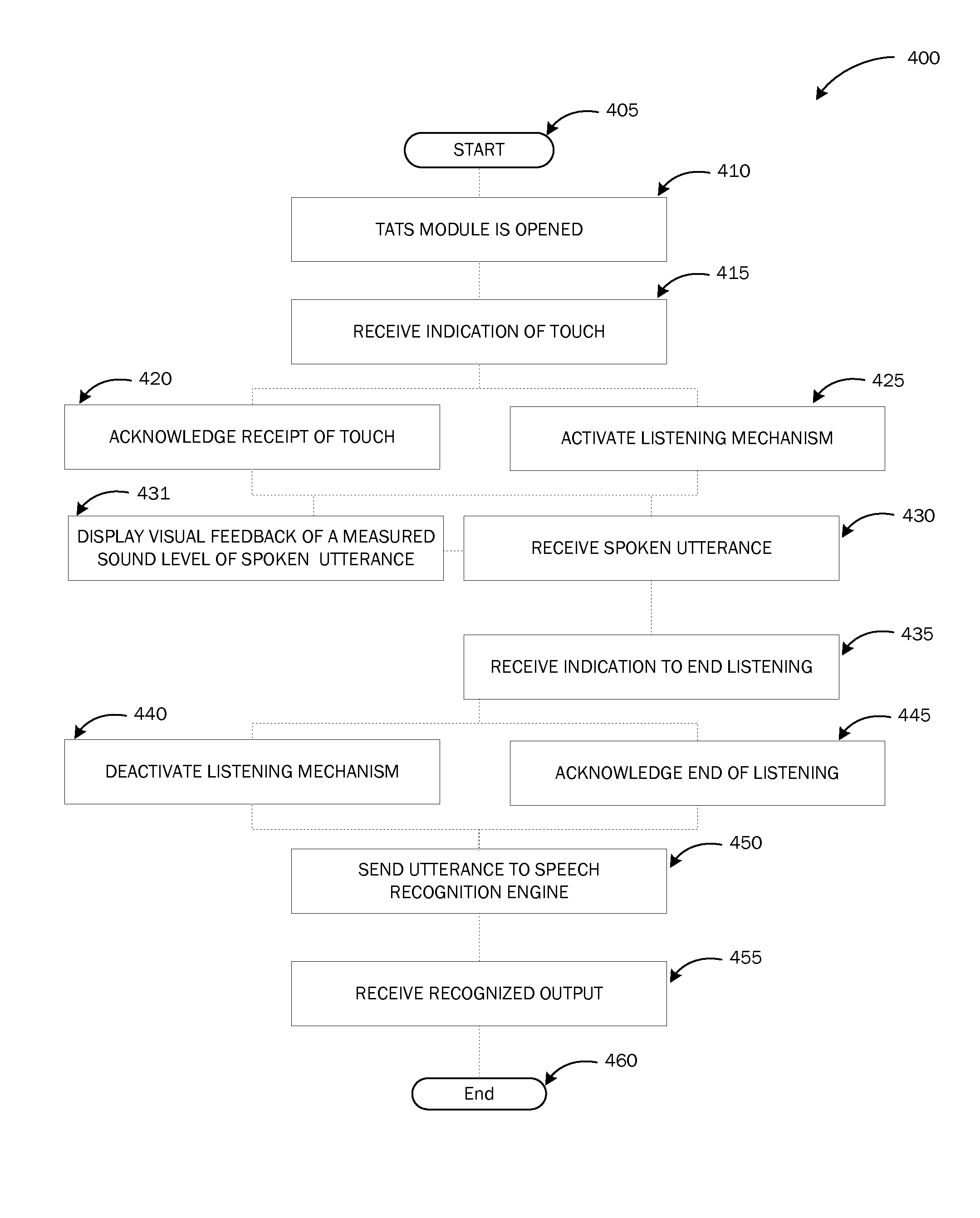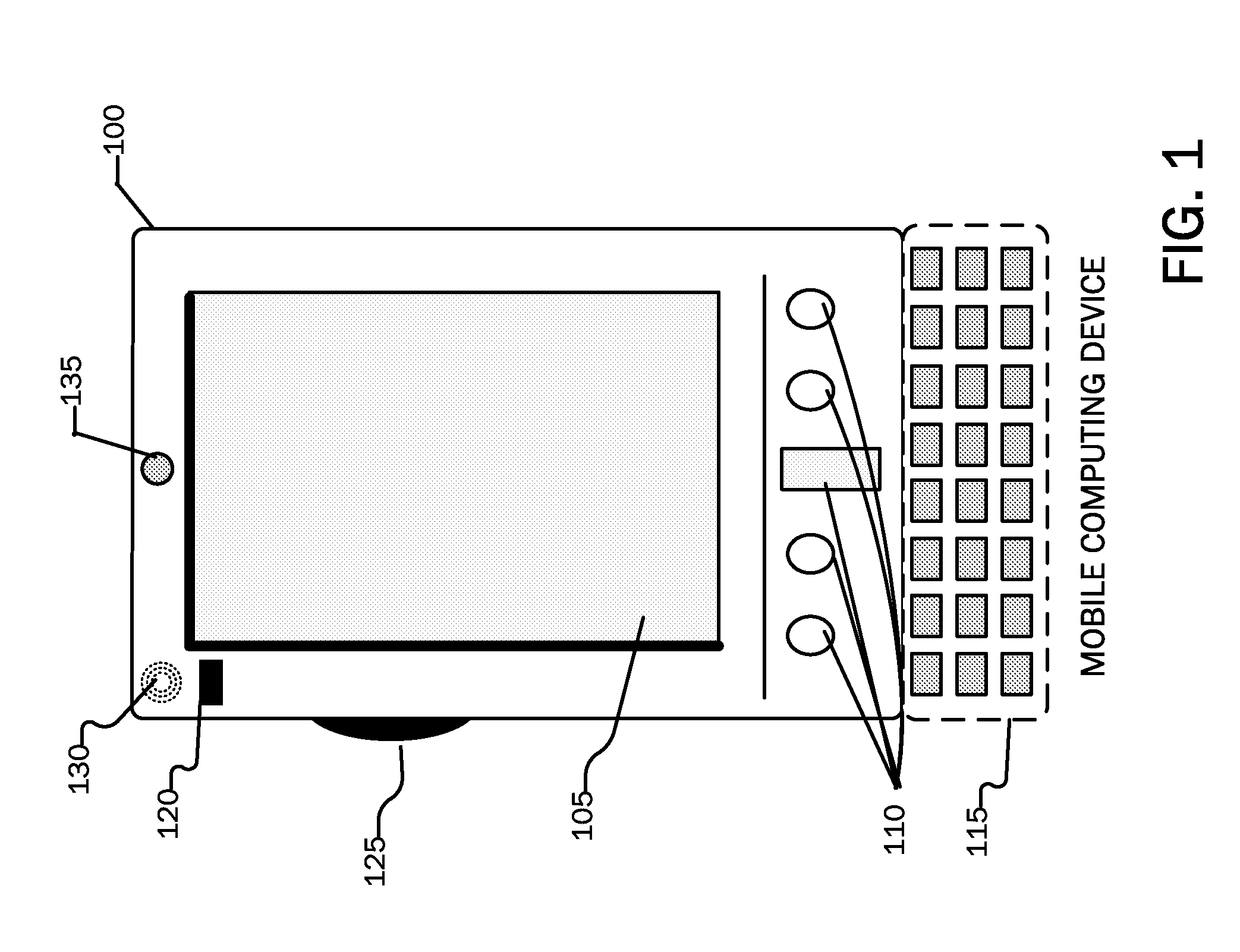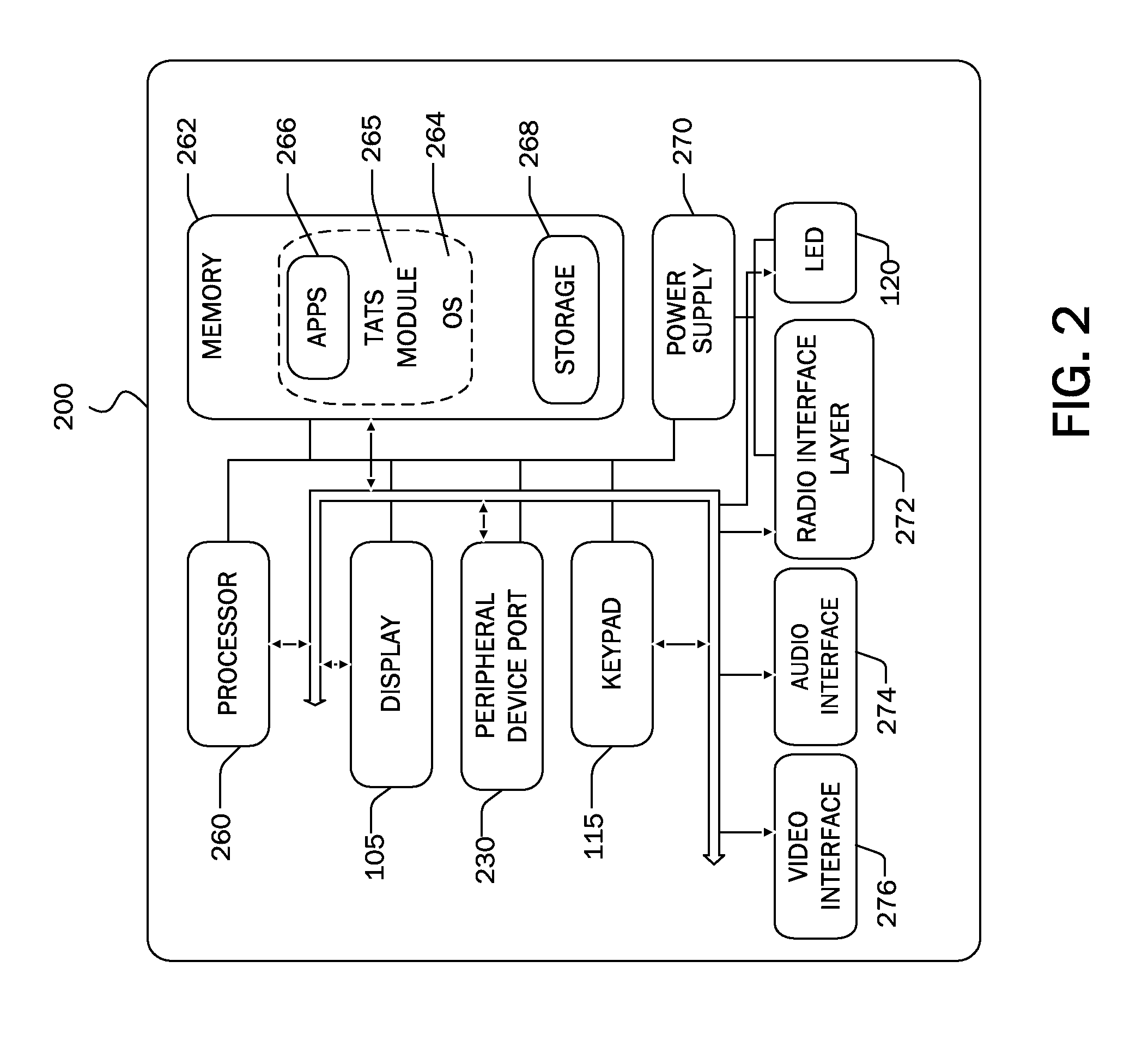Touch Anywhere to Speak
a technology of touch and anywhere, applied in the field of touch anywhere to speak, can solve the problems of adversely affecting speech recognition performance, cumbersome input via soft keys or dedicated hardware interfaces, and difficulty in looking at mobile devices and/or buttons, etc., and achieve the effect of improving speech recognition experien
- Summary
- Abstract
- Description
- Claims
- Application Information
AI Technical Summary
Benefits of technology
Problems solved by technology
Method used
Image
Examples
Embodiment Construction
[0017]As briefly described above, embodiments of the present invention are directed to engaging a listening mechanism in speech recognition interaction on a mobile computing device. By pressing on any given area of a screen of a mobile computing device, a touch-anywhere-to-speak (TATS) module activates the listening mechanism of a speech recognition module to accept a user's spoken input so that the speech recognition module may convert the spoken words into machine-readable input. Speech recognition applications may be utilized on mobile computing devices for a variety of tasks including, but not limited to voice dialing (e.g., “Call Bob”), open web search (e.g., “Pizza San Francisco California” to find pizza restaurants in San Francisco), and speech-to-text processing (e.g., text messages and emails).
[0018]Many input methods exist for engaging the listening mechanism in speech recognition interaction on a mobile computing device, each possessing its own array of drawbacks and some...
PUM
 Login to View More
Login to View More Abstract
Description
Claims
Application Information
 Login to View More
Login to View More - R&D
- Intellectual Property
- Life Sciences
- Materials
- Tech Scout
- Unparalleled Data Quality
- Higher Quality Content
- 60% Fewer Hallucinations
Browse by: Latest US Patents, China's latest patents, Technical Efficacy Thesaurus, Application Domain, Technology Topic, Popular Technical Reports.
© 2025 PatSnap. All rights reserved.Legal|Privacy policy|Modern Slavery Act Transparency Statement|Sitemap|About US| Contact US: help@patsnap.com



